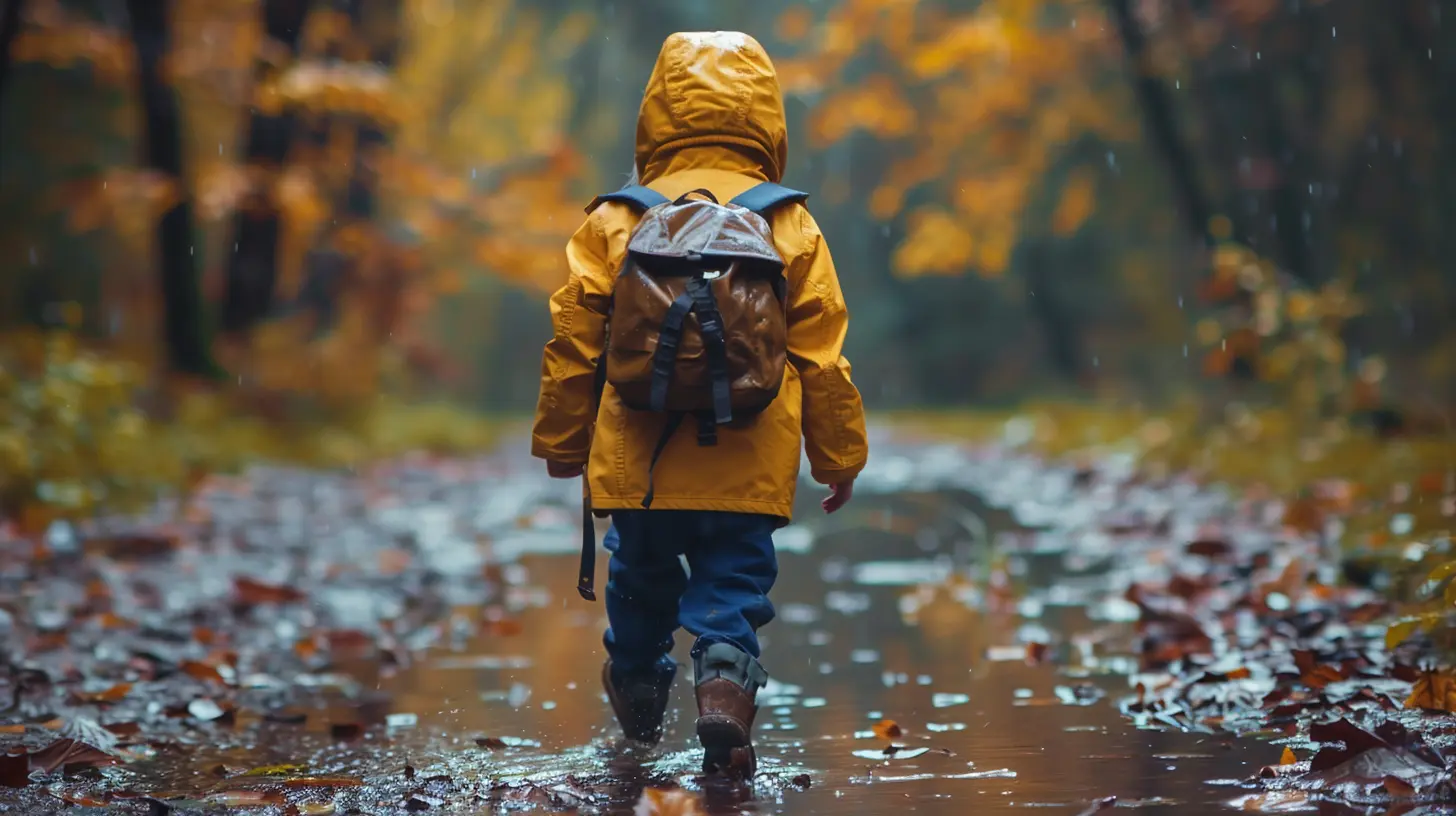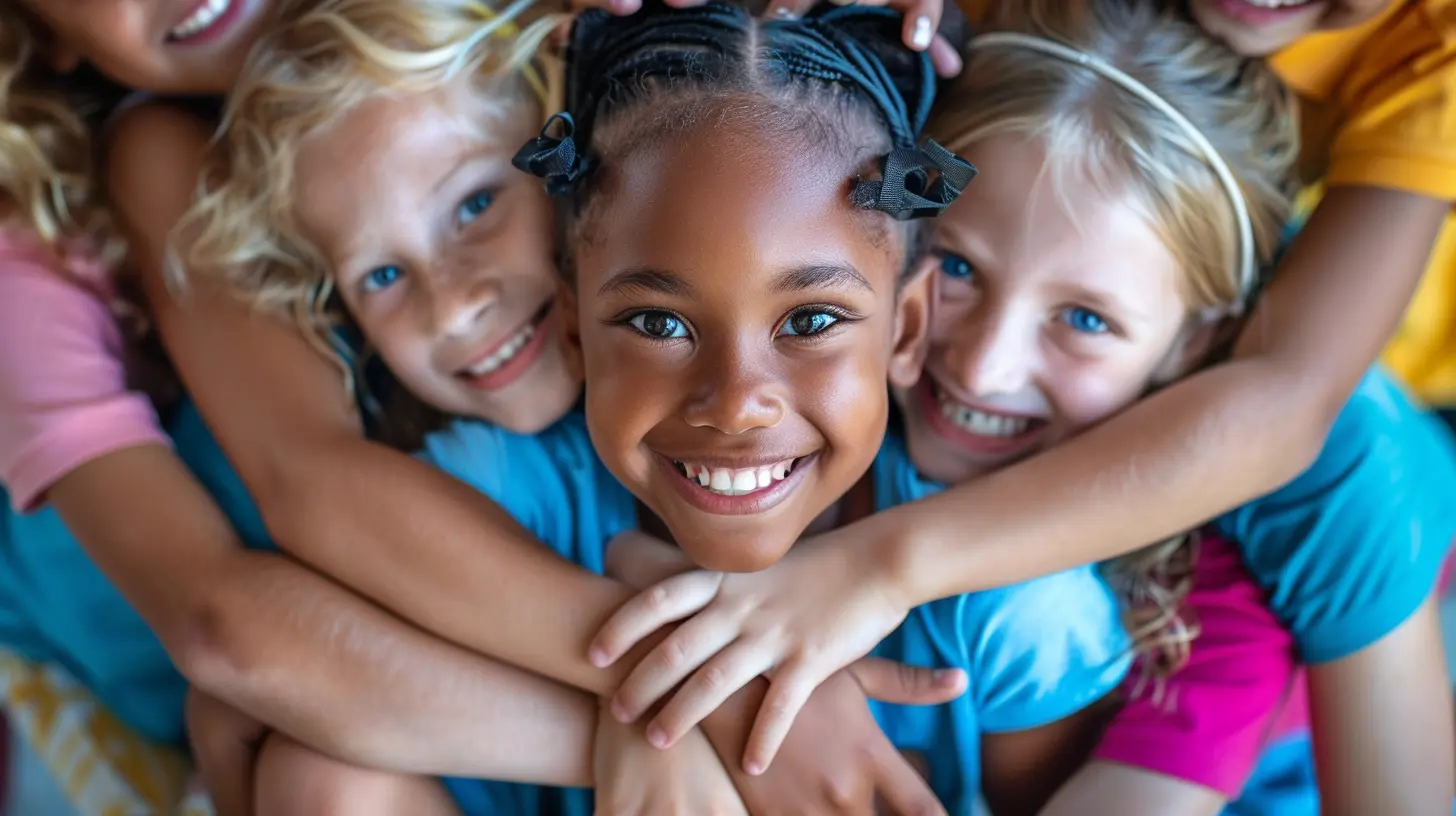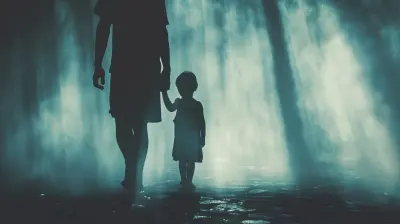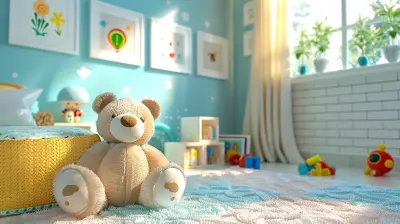How to Foster Empathy in Your Preschooler
5 August 2025
Ever watched your preschooler generously offer their last gummy bear, then turn around and snatch a toy like a tiny, adorable gremlin? Welcome to the wonderfully weird world of early childhood emotions. At this age, empathy is more like a seed than a skill—they have it, but it needs a whole lot of sunshine, water, and the occasional emotional pep talk to grow.
In this article, we’re diving deep (but keeping it light!) into how to help your pint-sized human develop empathy, that superpower that makes them kind, understanding, and less likely to throw blocks at their friends during playtime.

What is Empathy, Really?
Let’s break it down. Empathy is the ability to understand and share the feelings of someone else. It’s like emotional Wi-Fi—tuning into someone else's emotional signal without them having to spell it out. And while it might sound a bit philosophical, it’s actually pretty practical in preschool life.Think about it: when kids understand how others feel, they’re less likely to whack their buddy for stealing a dinosaur toy and more likely to say, “Hey, that made me sad.” Boom—communication, compassion, emotional growth.

But Wait… Are Preschoolers Even Capable of Empathy?
Great question! The short answer is yes, but it’s a work in progress. Preschoolers are still figuring out their own feelings, so grasping someone else’s takes practice. It’s like trying to pat your head and rub your tummy at the same time—doable, but wonky at first.Your little one might show signs of empathy in cute ways: offering you a soggy cookie when they think you're sad, or patting the dog because "he looks sleepy." These moments might seem small, but they’re huge stepping stones.

The Building Blocks of Empathy
Before we jump into the how-to part, let’s peek at what empathy is built on:- Emotional Awareness: Recognizing emotions in themselves and others
- Perspective-Taking: Imagining how someone else might feel
- Emotional Regulation: Managing their own feelings so they can respond kindly
- Compassionate Action: Doing helpful or kind things based on empathy
Okay, now that we’ve got the blueprint, let’s get to work!
1. Model Empathy Like a Boss
Kids are like pint-sized parrots—they mimic everything. If you step on a Lego and scream “Ow! My foot is having a bad day!” guess what? You just taught emotional expression, vocabulary, and maybe a bit of drama.Let them see you:
- Check in on a friend who’s upset
- Offer a hug when someone cries
- Talk about your own feelings in a healthy way
Even the everyday stuff counts. Saying, “I’m feeling tired, so I might get crabby. I’m going to take a deep breath,” shows emotional awareness in action.
2. Name Those Big Feelings
Preschoolers swim in an ocean of emotions but don’t always know how to label the waves. Help them out!Instead of just saying, “Don’t cry,” try:
👉 “You seem sad because your toy broke. It’s okay to feel that way.”
Use books, cartoons, or actual life mishaps to play “Name That Feeling.” Ask:
- “How do you think she feels right now?”
- “What face do we make when we’re surprised?”
Adding words to feelings helps kids recognize them not just in themselves, but in others too.
3. Play the "What If" Game
Cue the world’s simplest empathy-expanding activity—imagination!Try questions like:
- “What if your friend dropped their ice cream—how would they feel?”
- “What would you want someone to do if you were scared in the dark?”
This little game flexes those perspective-taking muscles. Plus, it’s fun and kind of dramatic. Bonus points if you act the scenarios out with stuffed animals.
4. Praise the Kind Stuff
Sometimes we get caught up in correcting behavior and forget to cheer the good stuff. When your kiddo does something with heart, be their personal empathy hype squad.Try:
- “That was so kind how you helped your friend.”
- “I saw you share your snack. That made them really happy.”
Don’t just say “good job”—be specific about what they did and why it mattered. It reinforces that empathy isn’t just nice, it’s powerful.
5. Tune into Their Emotional Channel
Every preschooler has their own little emotional radio station. Some broadcast loud and clear (complete with tears and theatrical sighs), while others keep it all under wraps.Help them tune into their emotional frequency by:
- Asking open-ended questions like, “How did that make you feel?”
- Giving them space to express without immediately fixing things
Remember, part of empathy is feeling safe enough to be vulnerable. So be their soft place to land—even if they're sobbing over a banana you peeled the "wrong" way. (Yes, that’s a thing.)
6. Be a Storytime Superhero
Books are empathy goldmines. They let kids walk in someone else’s shoes without leaving the couch.Choose stories with characters who deal with big emotions or dilemmas. Then chat about it:
- “Why do you think the bear was sad?”
- “What could the bunny have done to be a better friend?”
Bonus tip: Use funny voices. Empathy-building + entertainment = parenting win.
7. Teach the Magic Words, but Go Beyond “Sorry”
We’ve all seen it—two kids fighting over a block, followed by a reluctant mumbled “sorry” while still clutching the toy.“Saying sorry” is nice, but empathy isn’t about reciting scripts. It’s about understanding impact.
After conflict, guide them through:
1. What happened?
2. How did the other person feel?
3. What can we do to make it better?
Maybe it’s saying sorry, maybe it’s a hug, or maybe it’s giving the other child a turn. The goal? Making amends like a tiny emotional ninja.
8. Create a Kindness Jar
Grab a mason jar, decorate it with stickers and glitter (because preschool), and make it a “Kindness Jar.”Every time your child does something kind—helps a sibling, comforts a friend, feeds the dog without being asked—you add a token, bead, or pom-pom.
It’s a visual, tangible way to track all those empathetic moments. When the jar fills up? Celebration time! Ice cream, dance party, letting them stay up an extra 10 minutes—whatever works for your crew.
9. Show the Real World, Kid-Sized
Empathy doesn’t live only at home. Involve your preschooler in small acts of kindness outside your bubble.- Make cards for sick relatives
- Bake cookies for the neighbor
- Say “thank you” together to the garbage truck folks
When kids see that their kindness affects the world, it becomes a habit, not a chore.
10. Handle Mean Moments Gently
Spoiler alert: even the most empathetic kiddo will have grumpy goblin moments. That’s okay—this is a marathon, not a sprint.When your preschooler says or does something unkind, don’t shame them. Instead, help them reflect:
- “What do you think your words made them feel?”
- “What could we do differently next time?”
Empathy grows not from always getting it right, but from learning when we get it wrong.
A Few Quirky Tips to Keep It Fun
Let’s be honest, parenting advice can sound like it was written by robots in beige sweaters. But here are some offbeat (yet totally effective) ideas:🧸 Emotion Puppets
Make sock puppets with faces showing different emotions—sad, mad, glad, confused. Use them to act out scenes or “interview” your child. Plus, who doesn’t love a talking sock?🎨 Feelings Art
Grab some crayons and ask your kid to draw “what mad looks like.” Then do “happy,” “embarrassed,” or “jealous.” It’s like emotional charades with art supplies.🎭 Mirror Game
Sit in front of a mirror and make different faces. “Okay, this is my surprised face!” Watch your child's version. Then ask, “When do we feel like this?” It’s giggly and great for emotional recognition.Final Thoughts: Empathy is a Journey (With Juice Boxes)
Fostering empathy in a preschooler isn’t about raising a perfect mini-therapist. It’s about helping your child stop, notice, feel, and care—one small moment at a time.You won’t always see immediate results, and yeah, there’ll be days where the only thing your child seems to empathize with is a stubborn piece of lint on their sock. That’s okay.
Every hug, story, gentle correction, and emotional chat is a step forward. And when your child says, “I think she’s sad. I’ll go sit with her,” you’ll know—it’s working.
So keep watering that seed. Your tiny human is growing into someone really special.
all images in this post were generated using AI tools
Category:
Parenting PreschoolersAuthor:

Liam Huffman
Discussion
rate this article
1 comments
Emmett Chavez
Want your preschooler to empathize? Start by explaining that sharing snacks is a form of love—especially when it’s their favorite. Watch out for the dramatic tears when they have to share those gummy bears!
August 15, 2025 at 4:36 AM

Liam Huffman
Absolutely! Associating sharing with love can help preschoolers develop empathy. It's a valuable lesson, even amidst the tears!


